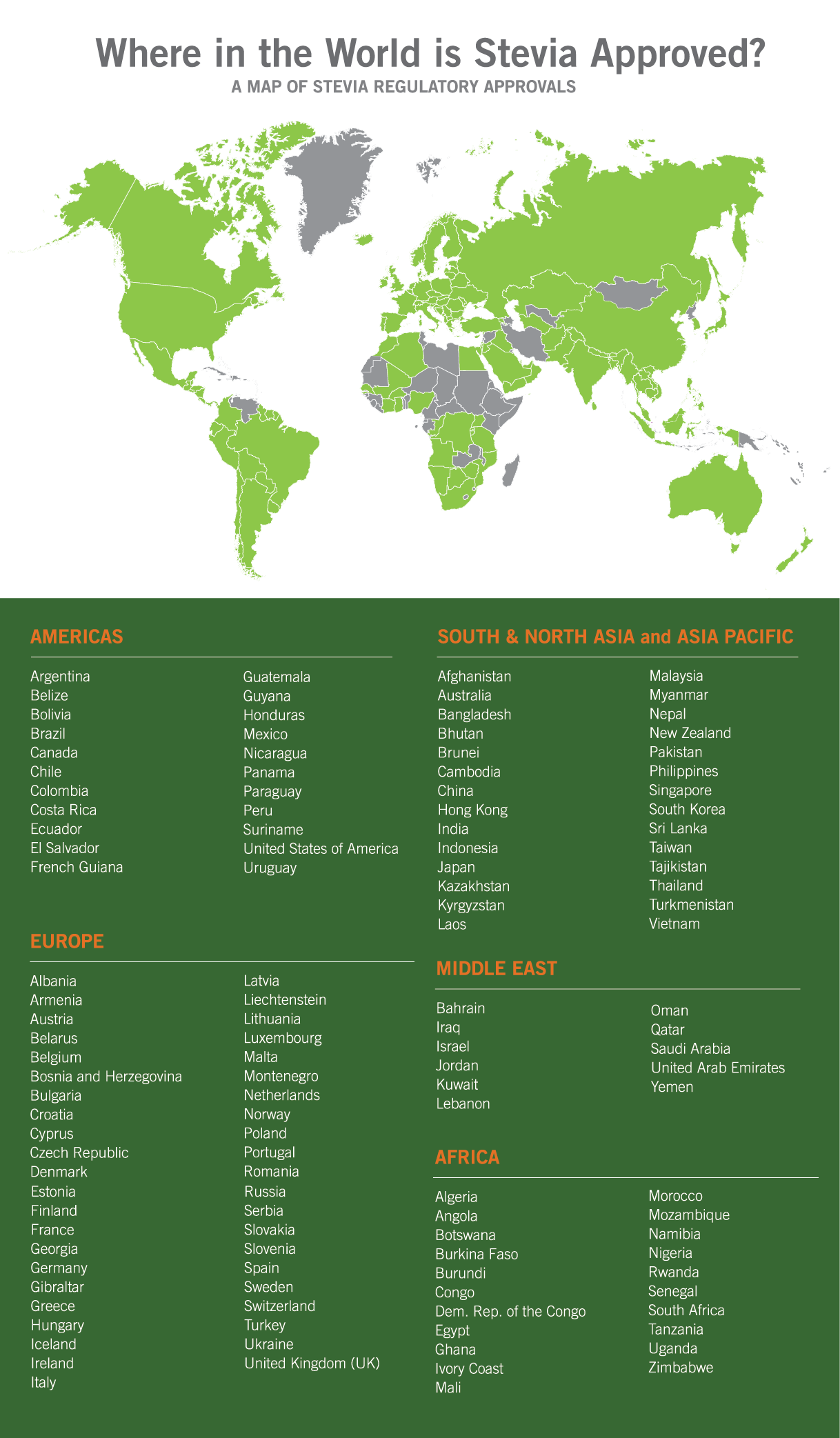Stamp of Approval
There are over 200 studies that support the science and safety of stevia leaf extract, and it has been given the stamp of approval by all major regulatory organizations around the globe. The majority of scientific research on stevia has used high-purity stevia extracts. In some countries, crude stevia extracts and or whole stevia plant leaves are often sold as dietary supplements, but it is important to note that only high-purity stevia leaf extract (i.e., purity of 85-95% or more steviol glycosides) has been evaluated and approved for use as an ingredient in foods and beverages by most regulatory agencies throughout the world. The use of stevia leaf extract has been approved for use by the whole family, including women who are pregnant or nursing, children, and those with diabetes.
More than 150 countries have approved and or adopted the safe use of stevia leaf extract in a variety of foods and beverages. The table below lists the countries and the map illustrates “in green” the regions and countries across the globe that have to date approved and or adopted the use of high-purity stevia leaf extracts.
The Acceptable Daily Intake (ADI)
Based on the body of research, regulatory authorities established an Acceptable Daily Intake (ADI) in 2008, which remains current.1,2 Experts agree stevia is safe for everyone, including children, women who are pregnant or nursing, people with diabetes and overweight or obese individuals.1,2, 3 The ADI for high-purity stevia leaf extract is the amount of stevia a person can consume daily over a lifetime without any significant health risk, and is expressed as 4 mg steviol equivalents per kilogram body weight per day. “Steviol equivalents” are used because each of the 50 or more steviol glycosides found in the stevia leaf differ in their structure, and contribute different amounts of steviol.
So what does this really mean?
A 150-pound (70 kg) person would need to consume approximately 30 – 40 packets of a tabletop stevia sweetener per day for the rest of his or her life to reach the ADI. The likelihood that one would reach or exceed the ADI is slim. According to the most recent research on dietary estimates of stevia intake around the world, the researchers report it is unlikely that adults or children, including diabetic adults and children will exceed the ADI.4
For more information on stevia safety and ADI, please visit the section on Safe for the Family.
REFERENCES
- The Joint FAO/WHO Expert Committee on Food Additives (JECFA). Safety Evaluation of Certain Food Additives. Steviol Glycosides. WHO Food Additive Series 60 Addendum. 2009.
- The Joint FAO/WHO Expert Committee on Food Additives (JECFA). 84th Meeting. Compendium of Food Additive Specifications. Mongraph 20. 2017.
- EFSA (European Food Safety Authority). Scientific Opinion on the safety of steviol glycosides for the proposed uses as a food additive. EFSA J. 2010;8:1–84.
- Martyn D, et. al. Low-/No-Calorie Sweeteners: A Review of Global Intakes. Nutrients 2018;10:357. Available at, http://www.mdpi.com/2072-6643/10/3/357.


